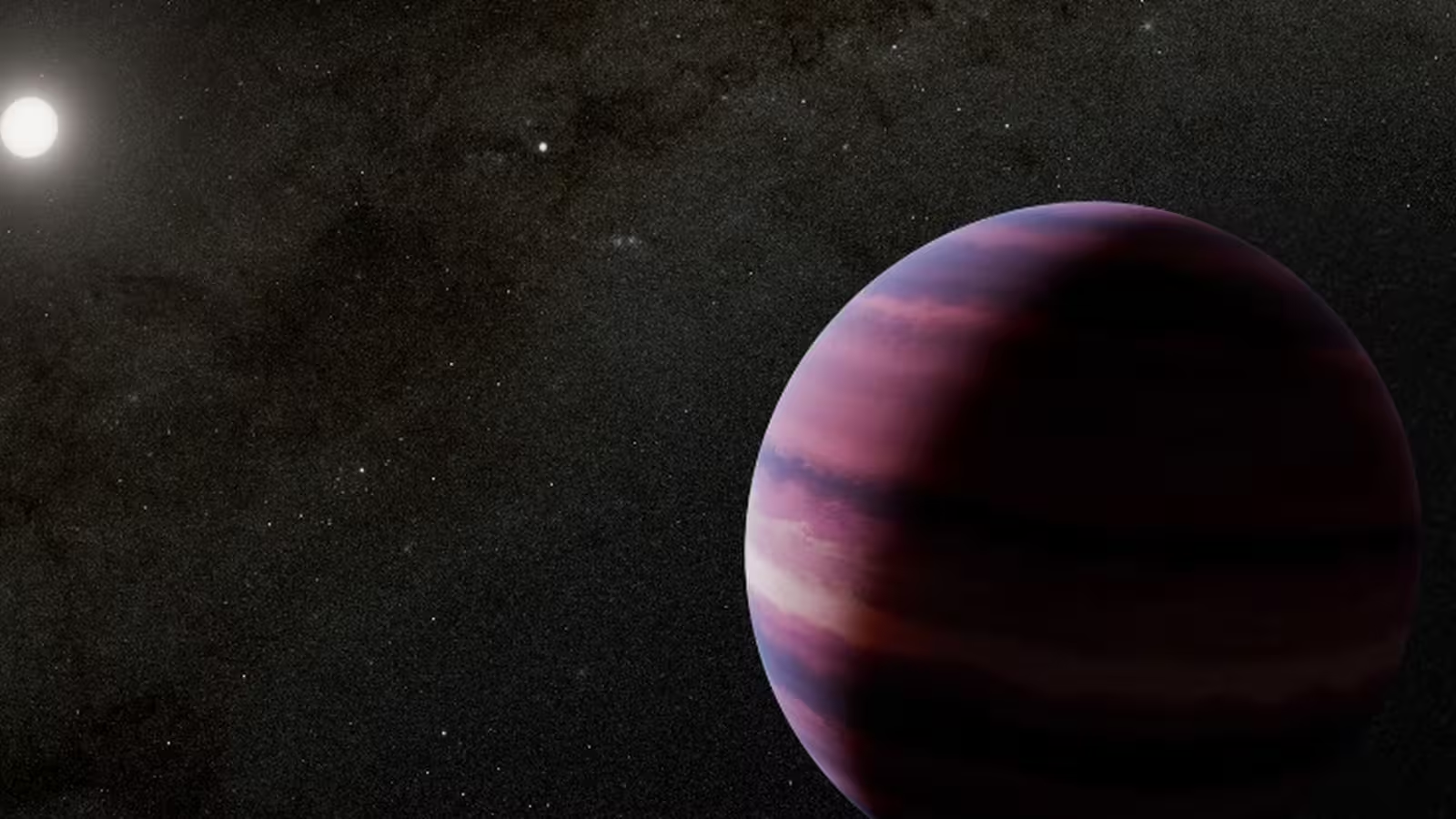6 Minutes
Nearby discovery: a possible habitable-zone world around our Sun’s twin
Observations with the James Webb Space Telescope (JWST) have revealed a faint, potentially planetary source orbiting Alpha Centauri A, the most Sun-like star in the Alpha Centauri triple system. The candidate—provisionally designated Alpha Centauri Ab—appears at roughly twice the Earth–Sun distance from its host, placing it inside the star’s classical habitable zone, the orbital range where liquid water could exist on a solid surface under suitable atmospheric conditions. If confirmed, this would be the closest directly imaged exoplanet to its star and one of the most accessible targets for detailed follow-up studies.
Scientific background: the Alpha Centauri system and exoplanet search methods
Alpha Centauri lies about 4 light-years from Earth and comprises a close binary pair, Alpha Centauri A (a G-type star like the Sun) and Alpha Centauri B, with the red dwarf Proxima Centauri orbiting farther out. Proxima already hosts at least three known planets, including one inside its small habitable zone, but planets around the central binary have been difficult to detect because the pair is bright, close together on the sky, and dynamic.
Most exoplanets are discovered indirectly via transit photometry (regular dips in starlight) or radial-velocity measurements (stellar wobble from gravitational pull). Direct imaging—which captures light from the planet itself—is technically demanding but gives unique opportunities to study atmospheric composition and thermal emission. For Alpha Centauri A, teams have applied high-contrast imaging methods, including coronagraphy, to block stellar light and search for faint companions.
Observations, analysis, and the disappearing-planet puzzle
Initial direct imaging evidence for a source near Alpha Centauri A was reported by Kevin Wagner and collaborators in 2021. A more recent JWST observing campaign led by astrophysicists including Aniket Sanghi and Charles Beichman took high-contrast images in August 2024 using a coronagraph to suppress starlight from Alpha Centauri A and careful subtraction to remove contaminating light from Alpha Centauri B. Those August data showed a faint point-like source at an angular separation corresponding to roughly twice the Earth–Sun distance.
Follow-up JWST observations in February and April 2025, however, failed to detect the same object. "We are faced with the case of a disappearing planet!" says Aniket Sanghi (Caltech). To reconcile the detections and non-detections, the research team ran millions of orbital simulations incorporating the times of positive and null observations. The models included the earlier 2021 sighting and showed that in many orbital configurations the candidate could have been too close to the star during follow-up epochs and thus hidden in the glare—consistent with a bona fide planet on a short-range orbit around Alpha Centauri A.

Inferred physical properties
Combining the imaging brightness and dynamical constraints, the candidate’s radius is estimated at roughly 1.0–1.1 Jupiter radii with a mass in the range of about 90–150 Earth masses (Saturn has ~95 Earth masses). At an orbital distance near 2 AU around a Sun-like star, this places the body squarely in the habitable zone. These parameters indicate a gas giant rather than a rocky planet, which alters but does not remove the astrobiological potential: gas giants can host large moons, and such satellites could in principle possess conditions suitable for liquid water and, conceivably, life.
Implications for planet formation and habitability
Confirming a gas giant in the habitable zone of a star that is part of a close binary would challenge current models of planet formation and orbital stability in multi-star environments. "Its very existence in a system of two closely separated stars would challenge our understanding of how planets form, survive, and evolve in chaotic environments," Sanghi notes. The dynamics of the Alpha Centauri binary could influence how protoplanetary material coagulated and migrated, so a verified Alpha Centauri Ab would be a crucial constraint for theoretical models.
From an astrobiology perspective, the presence of a giant planet in the habitable zone raises the possibility of habitable moons. In our Solar System, Jupiter and Saturn host diverse icy and ocean-bearing moons—Europa, Enceladus, and Titan among them—demonstrating that life-supporting environments can occur around giant planets. Detecting atmospheres, surface conditions, or satellite companions around Alpha Centauri Ab would require precision instruments and long-term monitoring.
Technologies, follow-up, and future prospects
High-contrast imaging with JWST’s coronagraphs enabled the initial detection, but confirmation will need additional methods and facilities. Continued JWST monitoring, precision radial-velocity measurements, and astrometry from upcoming ground-based Extremely Large Telescopes (ELTs) could help constrain the orbit and mass. Future space missions conceptually designed for exo-Earth imaging—starshades, advanced coronagraph-equipped space telescopes, or next-generation observatories like HabEx or LUVOIR (if realized)—would offer much greater capability to directly characterize atmospheres and search for moons.
"With this system being so close to us, any exoplanets found would offer our best opportunity to collect data on planetary systems other than our own," says Charles Beichman, director of the NASA Exoplanet Science Institute at Caltech. Yet he adds that such observations are extremely challenging because the stars are bright, nearby, and move quickly across the sky.
Conclusion
JWST’s possible detection of a gas giant in the habitable zone of Alpha Centauri A is a provocative and potentially transformative result for exoplanet science. If Alpha Centauri Ab is confirmed, it would be the nearest directly imaged planet to its star and a benchmark object for studying planet formation, orbital dynamics in multi-star systems, and the prospects for habitable moons. The candidate’s transient appearance in JWST data underscores the difficulty of high-contrast imaging near bright, nearby binaries and highlights the need for coordinated, multi-technique follow-up using space- and ground-based observatories. For now, Alpha Centauri Ab remains a compelling candidate that demands further observation to turn a tantalizing hint into a confirmed world.
Source: sciencealert


Leave a Comment